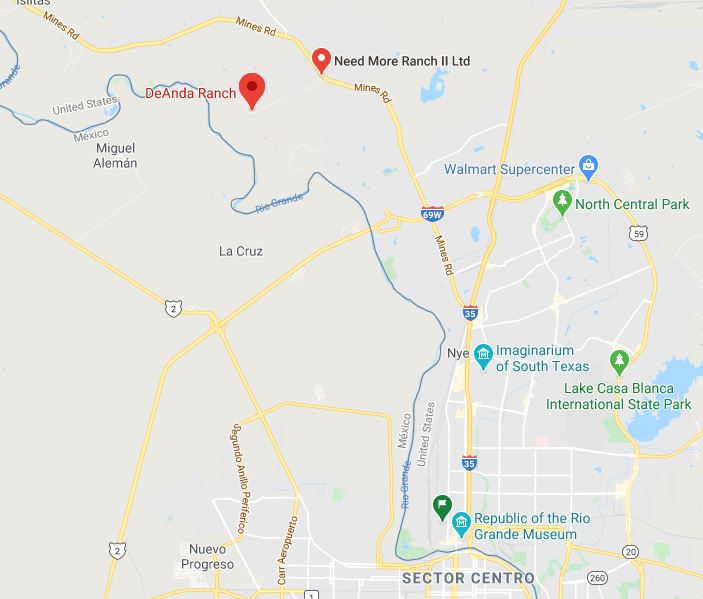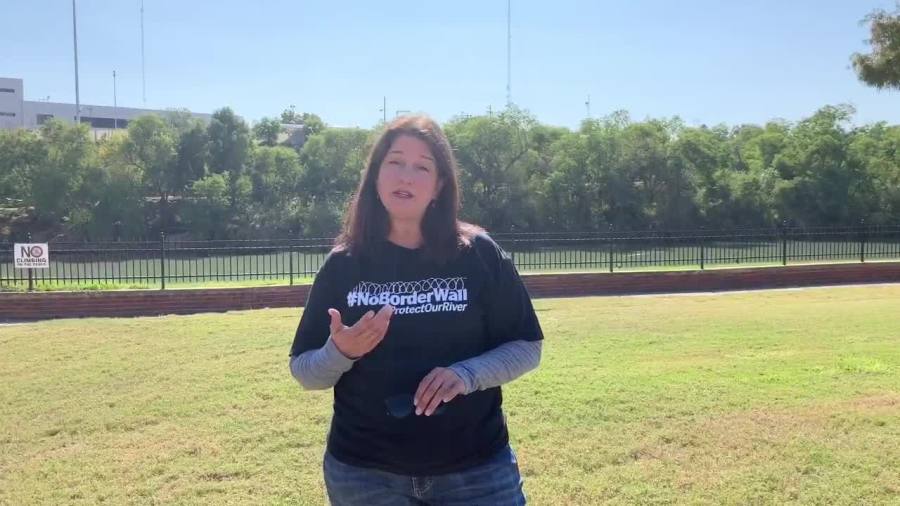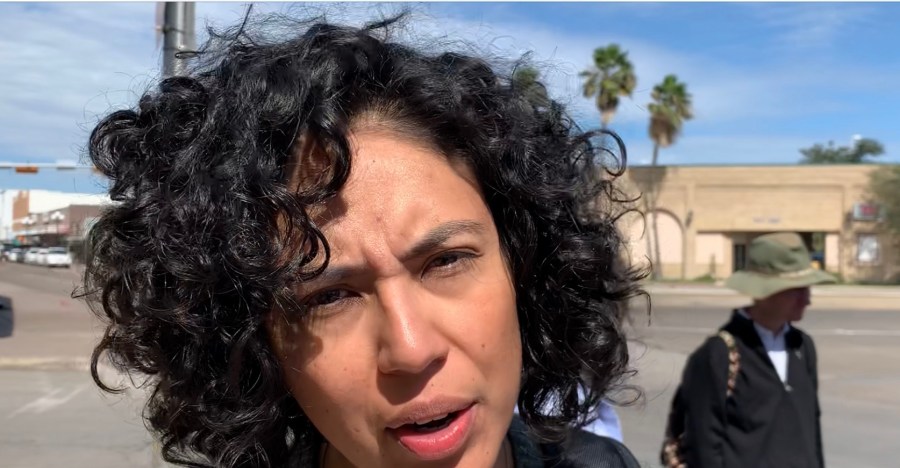McALLEN, Texas (Border Report) — U.S. Customs and Border Protection officials have extended until Thursday the period for Laredo residents to weigh in on border wall placement surrounding the South Texas city. But environmentalists say location plans for one segment of the wall will cut off the city from its main water source — the Rio Grande.
Through a public information request, Border Report has learned the projected position for 14 of the 69 miles of border wall that the U.S. Department of Homeland Security plans to build between Laredo and the river. The 14 miles are to start at the international railroad bridge near the riverfront outlet mall in downtown Laredo and run northwest to Pico Road and the private and historic DeAnda Ranch.
Leaders of the nonprofit Rio Grande International Studies Center told Border Report that running a 30-foot-tall bollard wall and 150-foot-wide enforcement zone through that path of Laredo will take out vegetation and destroy several middle-class, working-class and gated communities, as well as the ranch. The area, along the river, also is prone to flooding.

Laredo Is older than the United States. It was founded in 1755, and at one time was the capital of the short-lived independent nation, the Republic of the Rio Grande.
To run the wall upstream like this “will be devastating,” said Melissa Cigarroa, president of the board of directors of the Rio Grande International Studies Center, which studies and tracks the Rio Grande — the only drinking water source for this town of 260,000. “The impacts to the river, to neighborhoods, and Laredo College and also the city, it’s not just the bollards but the 150-foot enforcement zone will take out all of the locations along that river land.”
“It is going to erase history,” said Tricia Cortez, executive director of the Rio Grande International Studies Center. “This placement that you are describing is a huge part of the heart of Laredo.”
Border wall opponents have been repeatedly critical of the Trump administration, saying it has been increasing border wall construction at a time when most of the nation is distracted and preoccupied with the coronavirus pandemic.
“Overall what we’re seeing is that the government is really moving forward with all these cases. There is no slowing down in terms of surveying,” said Karla Vargas, a lawyer for the Texas Civil Rights Project, a nonprofit organization that offers legal advice to homeowners who are fighting a border wall from being built on their properties.
“One of the new hot spots is Laredo and we do see that those cases are moving forward,” Vargas said.
One of the new hot spots is Laredo and we do see that those cases are moving forward.”
Karla Vargas, lawyer for the Texas Civil Rights Project
CBP officials on May 8 announced that an Alabama company had been awarded a $275 million contract to construct these 14 miles of bollard wall. It was the first contract awarded in Laredo.
Read a Border Report story on the awarded Laredo contract.
Construction is to begin in January, but CBP officials said in a lengthy response email to Border Report that they are still taking comments on the design and location of the border infrastructure system for all 69 miles within Laredo and surrounding Webb County.
“Although an approximately 14 mile portion of the approximately 69 miles has been contracted, CBP will continue to accept information and comments from stakeholders for all of the approximately 69 miles of planned border wall as the environmental planning process continues. CBP considers stakeholder and public input throughout the environmental scoping and design processes for all new border wall system projects,” a CBP official wrote.
The solicitation of public input helps the agency determine “the presence and characteristics of sensitive resources and potential physical, biological, and cultural impacts. Information obtained from the outreach and consultation process and from the completion of field surveys is used to evaluate potential impacts to the environment from the planned projects. In addition, the data and information obtained is used to develop avoidance or mitigation measures that eliminate or reduce impacts to sensitive resources to the greatest extent possible,” the official said. “Finally, the analysis of potential environmental impacts is compiled into an Environmental Stewardship Plan and includes a summary of construction Best Management Practices to be implemented by the construction contractor in order to minimize impacts to the environment.”
But Cortez and Cigarroa — who have helped to organize riverfront sit-ins and a January march in downtown Laredo that drew hundreds in opposition to the border wall — say they are dubious that the federal agency will truly listen to their concerns since it has already awarded a contract.
“It’s proof that the commenting period is a farce,” Cortez said.
The original commenting period for the border wall in Webb and neighboring Zapata County was to expire on April 21, but was extended during the height of the coronavirus pandemic. CBP plans to build 51 miles of new border wall in Webb County and 18 miles in Zapata County.

But Cigarroa points out that funding for these sections of border wall were not included in the past two budgets approved by Congress. And CBP officials admitted in a recent email that: “CBP would be responsible for the funding and execution of the projects. The approximately 69 miles of new CBP-funded border wall system in Webb and Zapata County are in addition to any border wall system that is being funded and constructed by the Department of Defense pursuant to 10 U.S.C. § 2808.”
CBP says to enter comments into the public record, email LaredoComments@cbp.dhs.gov by May 21, and include “FY20 Laredo Border Wall System Projects” in the subject field.


















